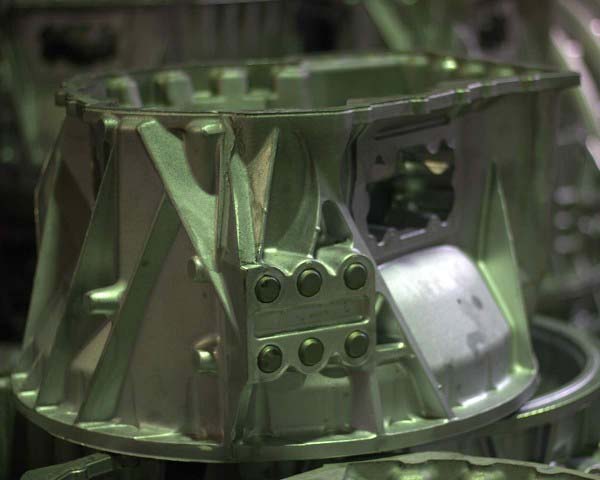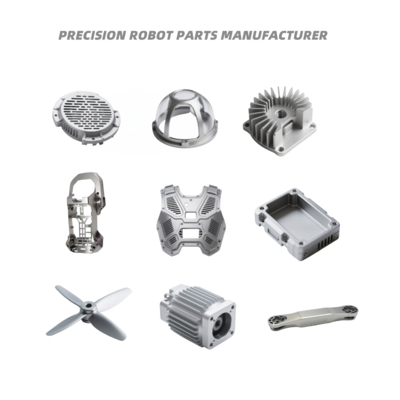Understanding the Ecological Advantages of Aluminum Factory Techniques
Aluminum shop methods play a necessary duty ahead of time sustainability within the production field. By applying advanced recycling approaches and energy-efficient techniques, these strategies considerably decrease waste and carbon footprints. Innovative casting techniques better enhance source conservation initiatives. As industries significantly focus on ecological responsibility, comprehending the full impact of these methods becomes important. What details improvements are blazing a trail in this change?
The Function of Aluminum in Sustainable Production
Numerous products add to sustainable manufacturing, aluminum stands out due to its unique residential or commercial properties and recyclability. This light-weight metal is not just resilient but additionally has excellent corrosion resistance, making it a perfect selection for different applications, from automotive to building and construction. Its high strength-to-weight proportion causes energy financial savings during transportation and use. Aluminum can be reused indefinitely without shedding its intrinsic top qualities, promoting a circular economy.
The manufacturing process of aluminum has developed, including energy-efficient approaches that lower carbon impacts. By utilizing eco-friendly energy sources, makers are significantly minimizing the environmental influence connected with aluminum production. Furthermore, making use of recycled aluminum requires significantly less power contrasted to drawing out and improving main light weight aluminum, bring about lower greenhouse gas discharges. As markets look for lasting options, aluminum's adaptability and environmentally friendly features position it as a crucial material in the pursuit of greener production methods.
Advanced Recycling Techniques in Light Weight Aluminum Foundries
Advanced reusing techniques in aluminum shops are reinventing the means scrap aluminum is processed and recycled. Innovative approaches, such as closed-loop recycling systems, enable foundries to redeem light weight aluminum from manufacturing waste and obsolete products efficiently. These systems decrease material loss and boost the top quality of recycled aluminum, making it a feasible choice to primary aluminum production.
Additionally, progressed sorting technologies, consisting of automated optical sorting and X-ray fluorescence, improve the separation of aluminum from other materials, guaranteeing higher purity levels in recycled outcomes. This accuracy minimizes contamination, which can compromise the honesty of the end product.
Additionally, the assimilation of advanced melting innovations, such as induction melting and energy-efficient heating systems, streamlines the recycling procedure, decreasing power usage. Collectively, these advancements contribute to a much more sustainable light weight aluminum industry by reducing reliance on virgin products and reducing greenhouse gas discharges related to light weight aluminum production.
Energy Effectiveness Improvements in Factory Workflow
Energy efficiency improvements in aluminum factory operations can considerably boost sustainability practices. Executing waste heat healing systems enables foundries to repurpose excess power, minimizing general power intake. Additionally, advancements in process automation enhance procedures, causing decreased waste and maximized resource usage.
Waste Warmth Recuperation
Executing waste warmth recovery systems in aluminum foundries greatly improves energy performance by catching and recycling excess thermal energy produced during production processes. These systems help with the conversion of lost warmth right into functional energy, which can be made use of for different applications within the foundry, such as powering or pre-heating products devices. By recouping warmth that would certainly or else be eliminated right into the environment, foundries can noticeably lower their overall power consumption and greenhouse gas discharges. This approach not only reduces operational expenses but also advertises sustainable techniques within the market. Furthermore, the fostering of waste warm recovery innovations lines up with governing requirements aimed at decreasing environmental effect, making it a crucial element of modern light weight aluminum factory operations.
Refine Automation Perks
Automating processes in aluminum factories can greatly boost power efficiency by optimizing manufacturing operations and decreasing waste. By applying advanced modern technologies such as robotics and machine understanding, foundries can enhance operations, minimizing unneeded power intake. Automated systems facilitate specific control over temperature level and material handling, making sure that energy is used only when required. In addition, real-time monitoring allows for immediate changes, lowering the threat of power loss. The integration of automation not just boosts performance however also lowers operational costs, making factories more competitive. Because of this, these energy-efficient techniques contribute significantly to sustainability objectives, decreasing the ecological impact of aluminum manufacturing while satisfying increasing market demands - Precision aluminum casting. Improved energy effectiveness via automation represents an essential step towards greener foundry procedures
Decreasing Waste Via Ingenious Casting Methods
Cutting-edge spreading methods play an important role in lowering waste in aluminum foundries. Strategies such as sophisticated molding and the application of recyclable materials considerably minimize production scrap. These techniques not only boost efficiency however also contribute to a much more lasting manufacturing process.
Advanced Molding Techniques
As sectors progressively prioritize sustainability, advanced molding methods in light weight aluminum shops become effective remedies for reducing waste. These cutting-edge approaches, such as 3D printing and precision mold and mildew making, substantially improve the performance of the spreading procedure. By utilizing computer-aided style (CAD) and simulation innovations, manufacturers can enhance mold and mildew geometry, minimizing material usage while keeping item stability. Additionally, progressed methods enable the manufacturing of complex shapes that standard techniques can not achieve, reducing the requirement for added machining and therefore reducing scrap product. The versatility of these strategies enables for quick prototyping, additional reducing lead times and energy intake. Overall, the implementation of sophisticated molding methods represents an essential step towards environmentally accountable aluminum production, straightening with international sustainability goals.
Recyclable Product Utilization
Recyclable products play a crucial function in reducing waste within light weight aluminum foundries, transforming the casting landscape via their reliable use. By including scrap aluminum and various other recyclable parts into the production process, shops click here can greatly decrease the need for virgin materials. This not just conserves all-natural sources however additionally minimizes power intake related to mining and refining. Ingenious spreading methods, such as die casting and sand casting, enable for smooth assimilation of these materials, making sure high-grade outputs. The use of recyclable products fosters a circular economy, where resources are continuously reused and repurposed, reducing landfill contributions. Eventually, the strategic usage of recyclables enhances sustainability while advertising cost-effectiveness in light weight aluminum shop operations.
Minimizing Production Scrap

Life Process Assessment of Light Weight Aluminum Products
Although aluminum is widely acknowledged for its lightweight and resilient residential or commercial properties, a complete Life process Evaluation (LCA) exposes the ecological influences associated with its manufacturing, usage, and disposal. The LCA process examines the energy consumption, greenhouse gas emissions, and resource deficiency connected to light weight aluminum products from extraction of bauxite ore to end-of-life monitoring. Main aluminum manufacturing is energy-intensive, typically counting on nonrenewable fuel sources, which contributes significantly to carbon footprints. In contrast, recycling light weight aluminum offers significant environmental benefits, as it utilizes only a fraction of the power needed for key production. Additionally, the recycling procedure minimizes landfill waste and conserves natural deposits. The LCA additionally considers the item's long life and capacity for reuse, highlighting the relevance of sustainable layout. Generally, recognizing the life process impacts of light weight aluminum products is important for making informed decisions that prioritize ecological sustainability within the industry.
Case Researches: Effective Sustainable Practices in the Market
The light weight aluminum industry has actually started to embrace ingenious lasting techniques that deal with the environmental obstacles recognized in Life process Evaluations. One notable case is a leading factory that implemented a closed-loop recycling system, considerably reducing waste and energy consumption. By reusing scrap light weight aluminum in production, the facility attained a 40% reduction in its carbon impact.
One more example includes a producer that adopted sustainable power sources, powering its operations with solar and wind energy - Precision aluminum casting. This shift not only decreased greenhouse gas exhausts but likewise enhanced the company's online reputation among environmentally aware consumers
In addition, a 3rd shop has actually bought innovative spreading strategies, which maximize material use and lessen defects, even more reducing resource consumption. These study highlight that the light weight aluminum industry can integrating lasting techniques, showing both environmental obligation and financial practicality, ultimately contributing to a much more lasting future.
Frequently Asked Inquiries
Exactly How Does Aluminum Compare to Other Steels in Sustainability?
Light weight aluminum is normally considered extra sustainable than numerous steels as a result of its recyclability, lower power demands for production, and minimized ecological influence. Its lifecycle efficiency goes beyond that of steel and copper in various applications.
What Is the Carbon Impact of Light Weight Aluminum Foundry Processes?
The carbon impact of light weight aluminum shop procedures differs, commonly ranging from 4 to 15 statistics lots of carbon dioxide per lot of light weight aluminum created. Elements influencing this consist of power resources, modern technology, and the effectiveness of operations.
Are There Health Risks Connected With Aluminum Shop Operations?

What Are the Expenses Related To Lasting Aluminum Techniques?
The prices connected with sustainable aluminum methods include greater first financial investments in technology, potential boosts in functional costs, and ongoing upkeep. Nonetheless, these are often balanced out by long-term cost savings and lowered ecological effect.
Exactly How Does Aluminum Recycling Influence Resident Communities?
Light weight aluminum recycling positively effects local communities by developing tasks, lowering garbage dump waste, and decreasing energy prices. It fosters economic growth and promotes ecological stewardship, leading to healthier living conditions and enhanced neighborhood interaction in sustainability efforts.
Additionally, the use of recycled light weight aluminum calls for significantly much less power contrasted to drawing out and fine-tuning main light weight aluminum, leading to reduced greenhouse gas exhausts. Advanced recycling methods in light weight aluminum shops are revolutionizing the way scrap aluminum is refined and reused. Aluminum Foundry. Implementing waste heat recovery systems in aluminum shops substantially improves power effectiveness by recording and recycling excess thermal energy produced during production processes. Automating procedures in aluminum shops can significantly enhance power effectiveness by optimizing manufacturing operations and reducing waste. The carbon footprint of aluminum foundry procedures varies, commonly ranging from 4 to 15 statistics bunches of CO2 per heap of light weight aluminum created